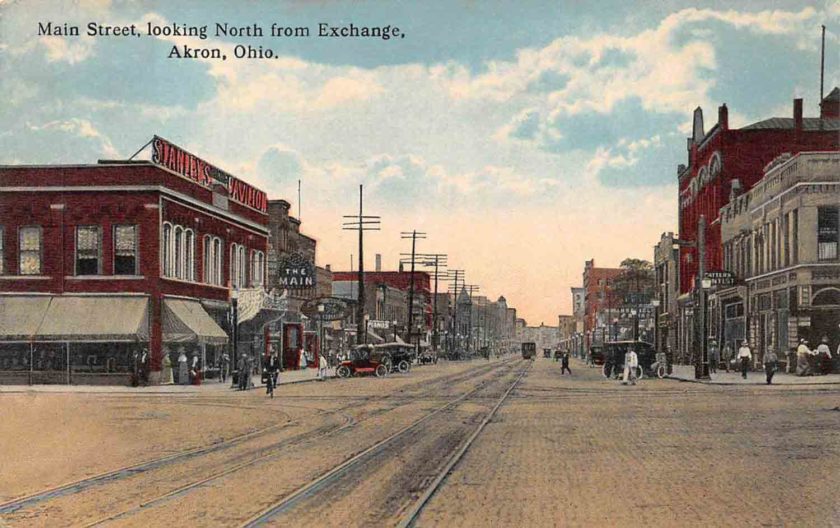
Author: tconte

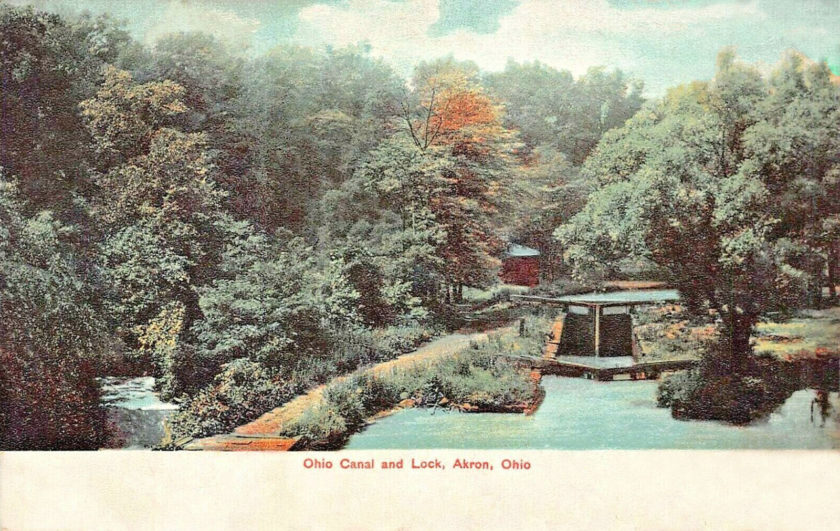
Ohio Canal and Lock
The Ohio and Erie canal carried freight traffic from 1827 to 1861. From 1862 to 1913, the canal served as a water source for industries and towns. During 1913, much of the canal system was abandoned after flooded severely damaged key section.
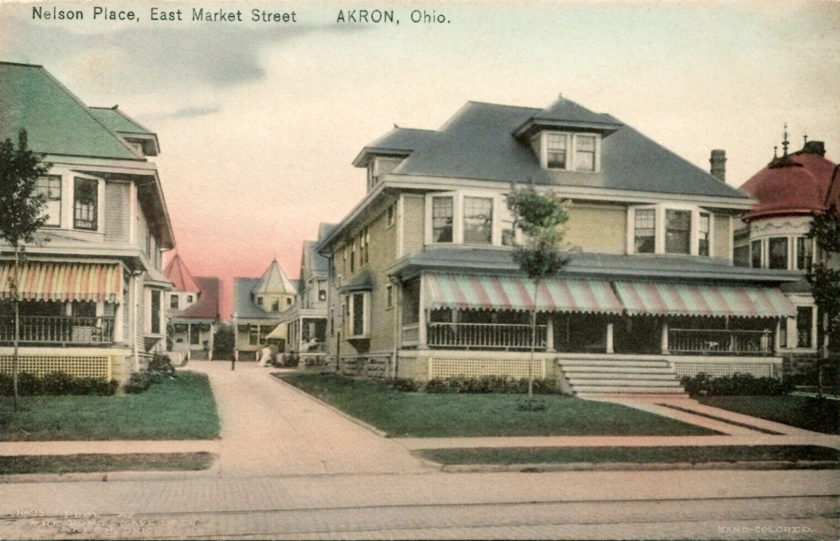
Nelson Place – East Market St.
Residences along East Market Street.

Silver Lake: Pavilion, Dining Hall, and Boat Landing
In 1876, Ralph H. Lodge began acquiring the Silver Lake and its surrounding land. Originally a picnicking and swimming area, Ralph soon turned the area into one of Ohio’s greatest attractions. Silver Lake featured animal exhibits, a roller coaster, sports facilities, a dance hall, and a hotel, steam boat rides and a miniature railway.
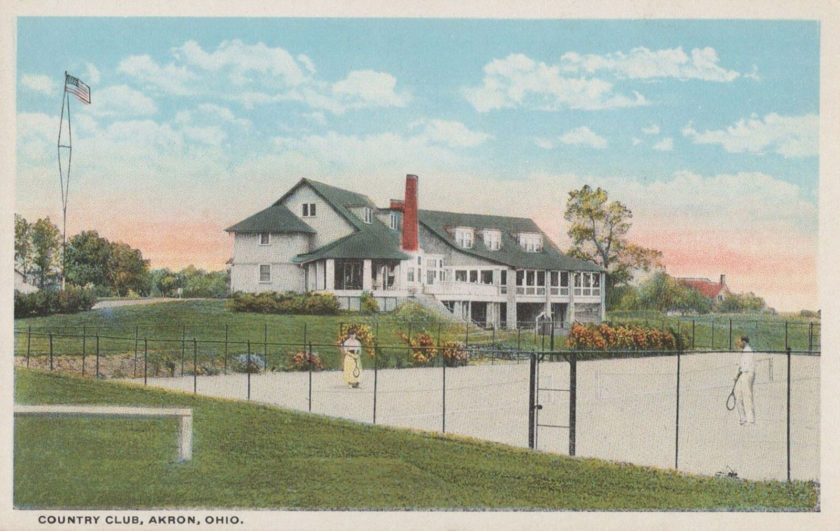
Country Club – Akron
Founded in 1894 in Akron, Ohio, Portage Country Club is one of the oldest clubs in America. The Club’s founding members were Charles C. Goodrich (the son of Dr. Benjamin F. Goodrich, the founder of B.F. Goodrich Company), Charles G. Raymond (an executive at B.F. Goodrich Company) and Bertram G. Work (also an executive at…
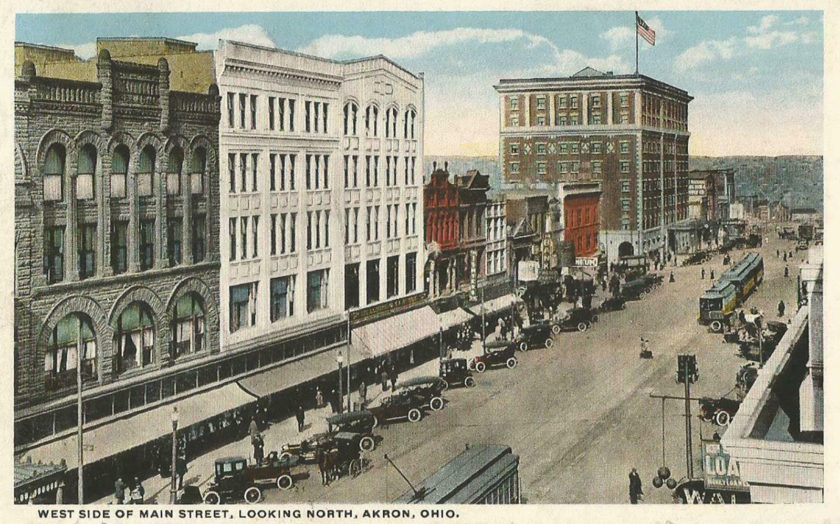
West Side of Main Street, Akron
Akron’s Main Street has seen many changes over the years. The city would hardly be recognized by founders Simon Perkins and Paul Williams.
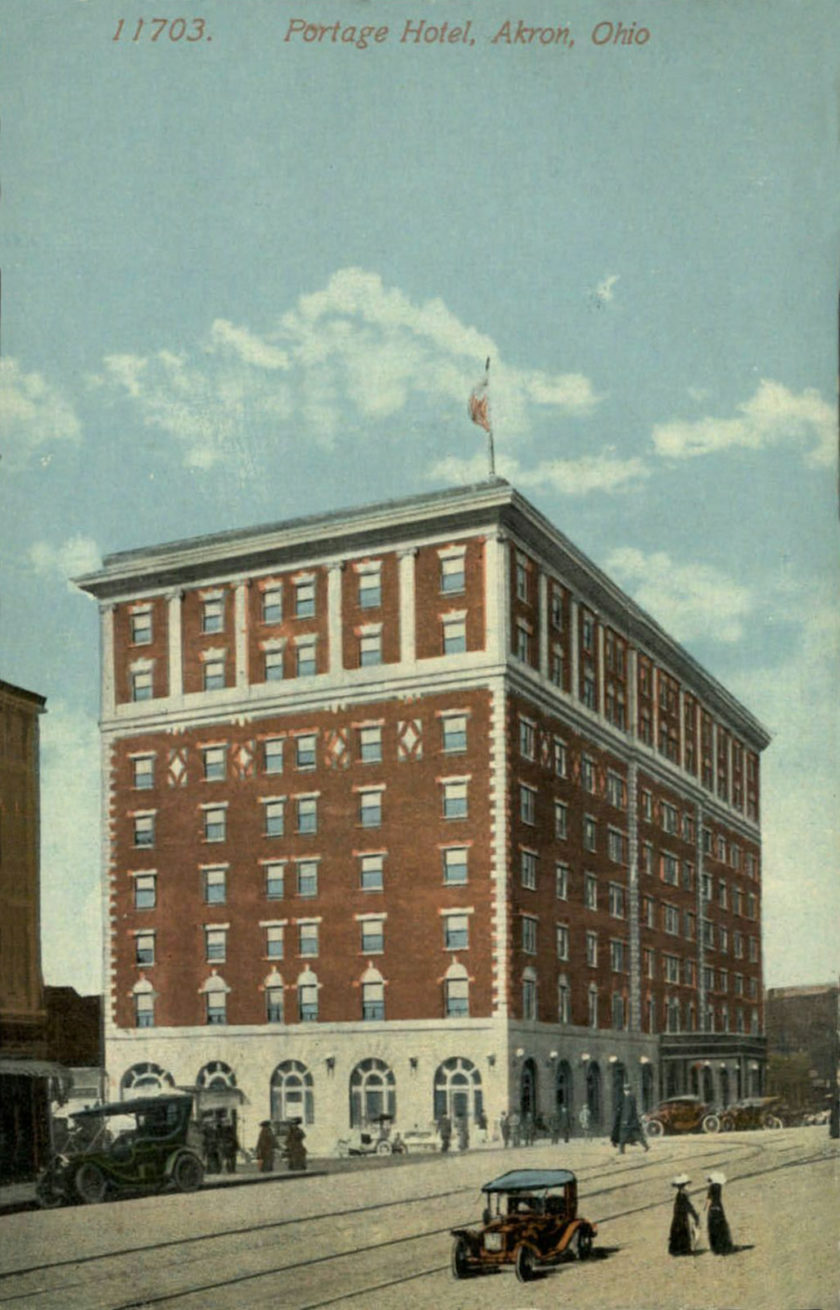
Portage Hotel
The Portage Hotel was located at 10 North Main Street in Akron. The eight-story, 170-room hotel opened on June 12, 1912. In 1935, the Portage Hotel was host to the founding of the United Rubber Workers Union. The Portage closed in 1969 and was repurposed for a short time as a nursing home. The building…
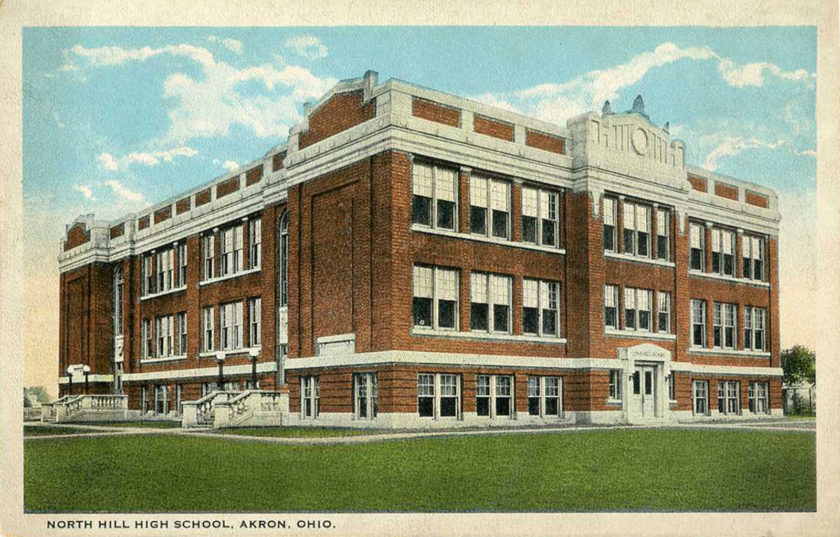
North High School
North High School was established in 1915 as Akron’s fourth high school, after Central, South, and West. The school was located at the northwest corner of Dayton Street and East Tallmadge Avenue in what later became Jennings Middle School, a building that stood until 2012.
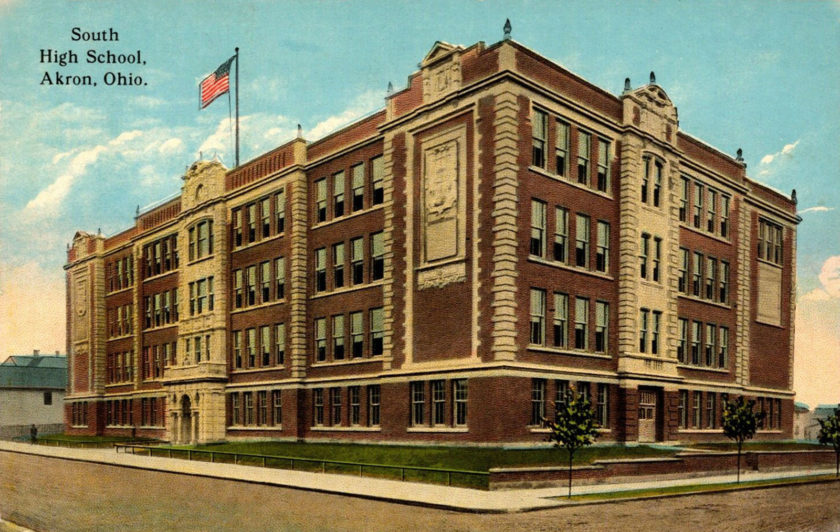
South High School
Akron’s South High School was built in 1911 and was the second high schools to be built by the Akron Public School district. In 1956 the school building became Thornton Junior High School and housed grades seven through nine until its closure at the end of the 1978-1979 school year. The building was eventually demolished…
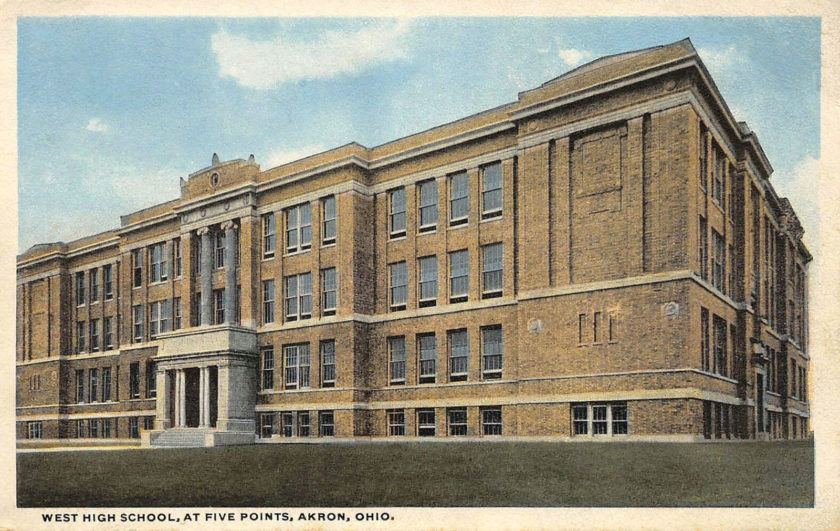
West High School
West High included a 1,200-seat two-level assembly room, a walled rooftop garden, and a modern gymnasium with running track. West graduated its largest class in 1931 — 125 students in January and 221 in June. Its final graduating class in June 1953 had only 136 members. Eventually, the West High School building became a junior…
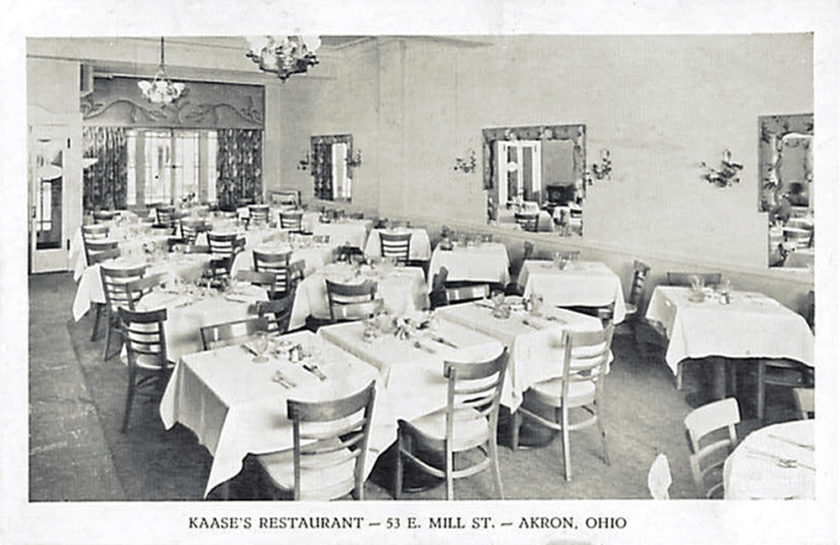
Kaase’s Restaurant
Kaase’s Restaraunt was located at 53 E. Mill Street.
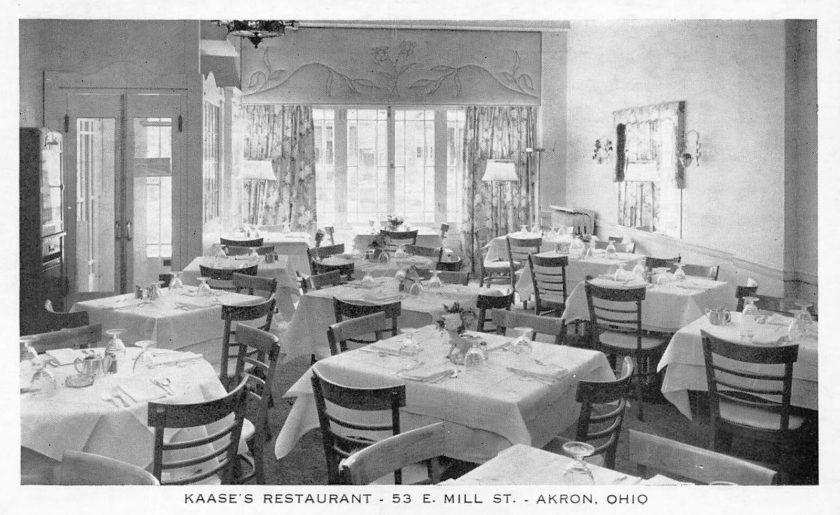
Kaase’s Restaurant Interior
“Food of DistinctionFR-3516 53 E. Mill Street, Akron, O. Off Rt. 5, Opposite Colonial TheaterBetween Main and High St. SERVING LUNCH AND DINNER11:00 A.M. to 8:30 P.M.Open All Year Except ChristmasOUR SPECIALTIESCrisp Potato BasketFilled With Creamed ChickenSteaks and ChopsHot Cinnamon RollsSouthern Corn SticksFacilities for Private Parties”AIR CONDITIONED
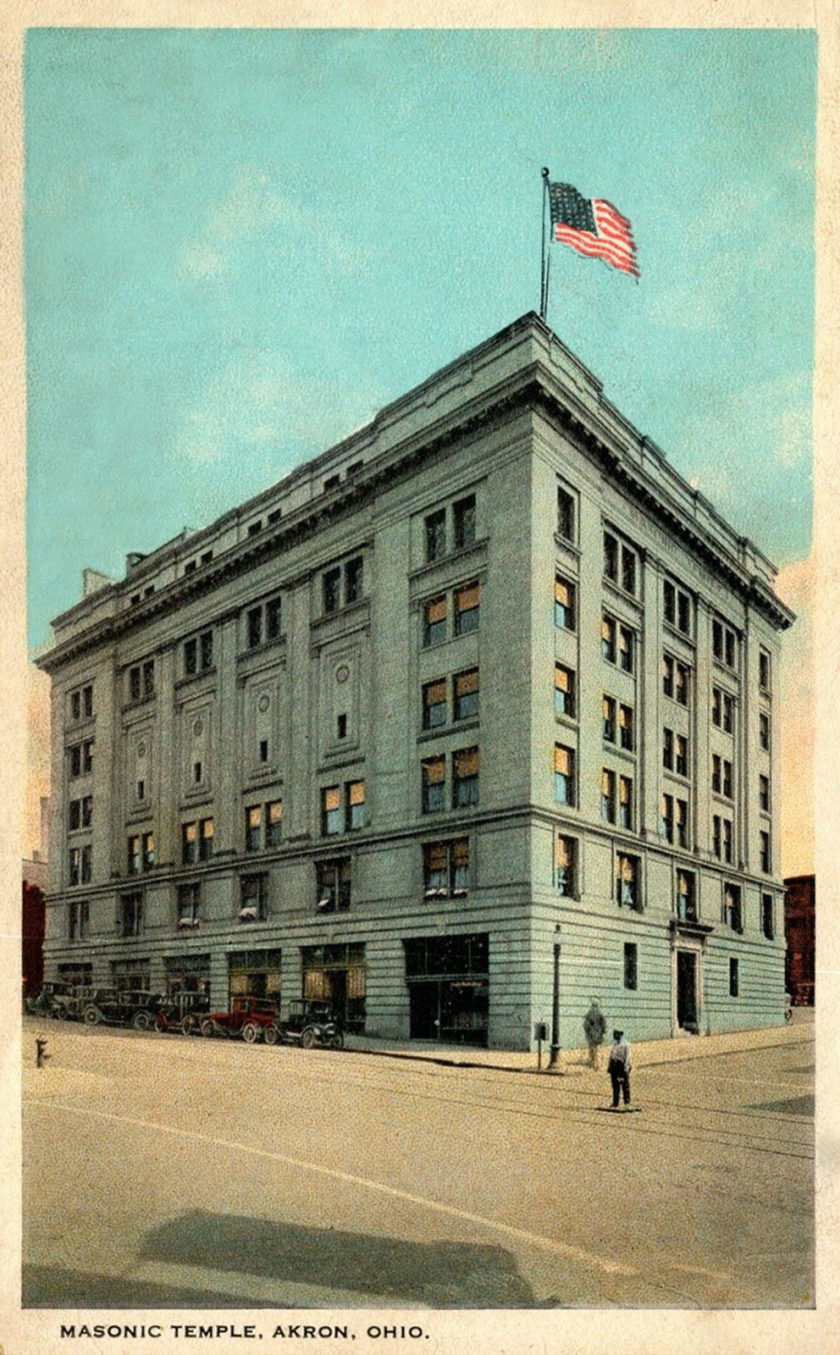
Masonic Temple, Akron
The temple was built by the Freemasons in 1917 as their downtown business and social gatherings location. Following a sale in 1999, the building went through a two million dollar restoration project. Today the structure is used as a special events center.
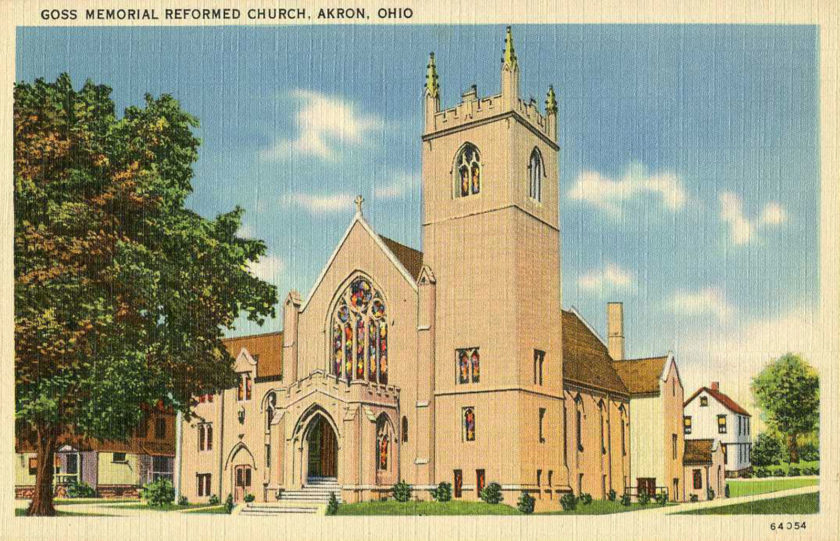
Goss Memorial Reformed Church
“The modern church building is located in the Kenmore District of Akron, Ohio— “Where Florida meets Eleventh.” It is of beautiful Gothic architecture and was dedicated in 1929 at a cost of $110,00. it is “A Friendly Church With a Clear Gospel Message.”
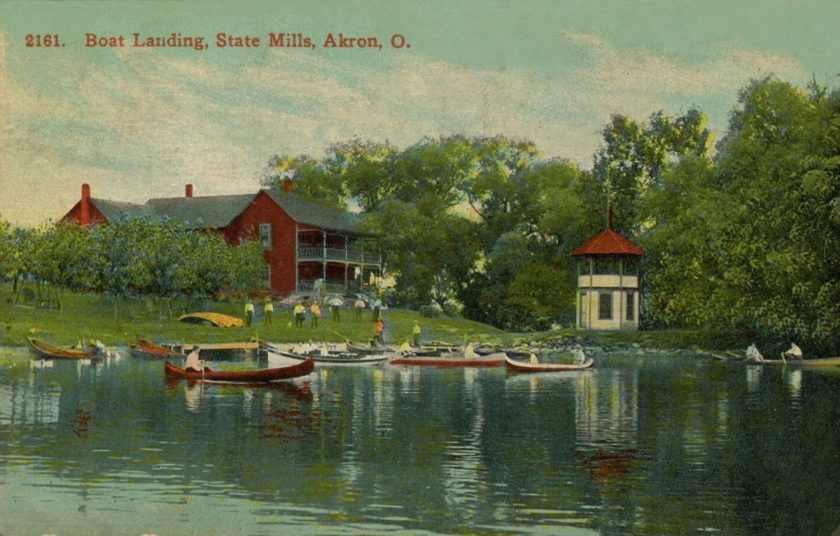
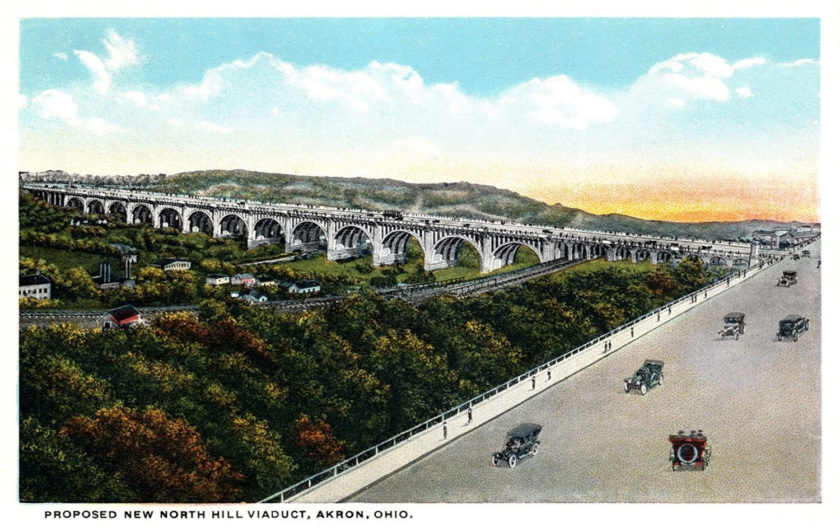
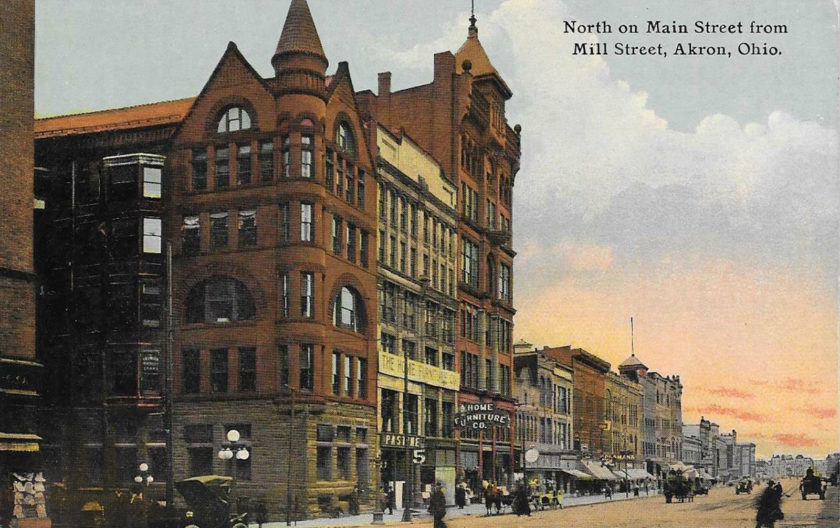
Main Street Looking North from Mill Street
Motor cars were still new on the scene when this image of Akron’s Main Street was captured by the photographer.
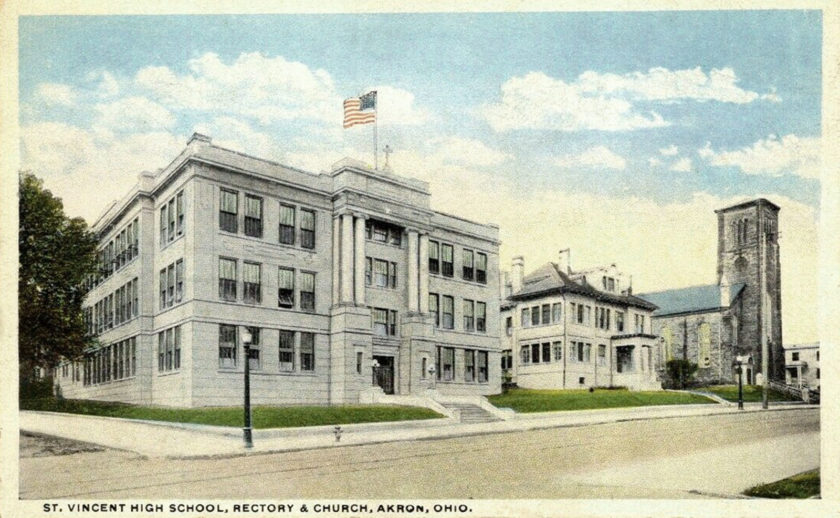
St. Vincent High School
With roots as a mission church visited by Father Basil A. Shorb, pastor of St. Francis Xavier Church, Doylestown, in 1837, St. Vincent de Paul parish is the oldest church in Akron.
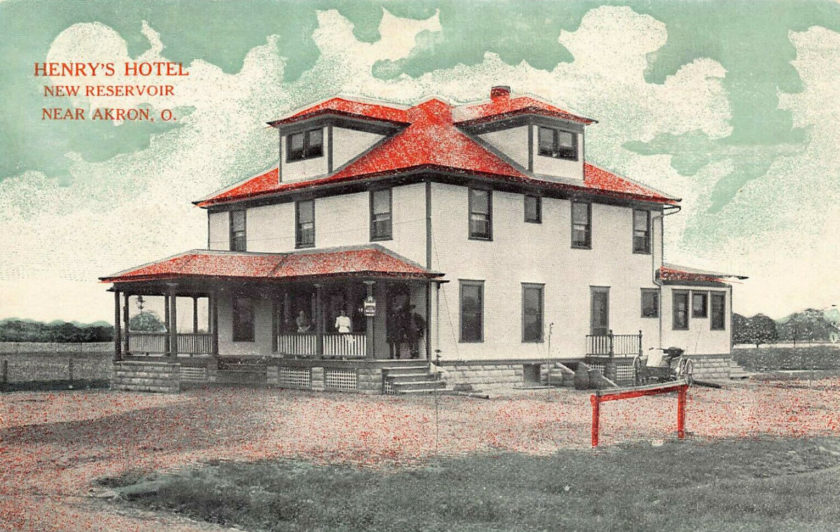
Henry Hotel, New Reservoir
Henry Hotel, New Reservoir, Near Akron, Ohio – See: Walter Thornwell Inn
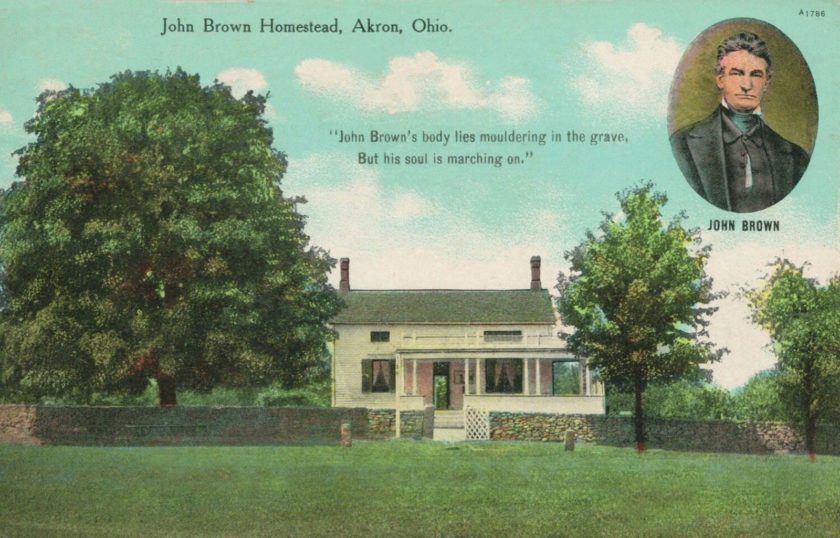
John Brown House
Brown was an abolitionist with strong religious convictions. He felt that violence was necessary to end American slavery, since decades of peaceful efforts had failed. In May 1856, Brown and his sons killed five supporters of slavery in the Pottawatomie massacre. Brown then commanded anti-slavery forces at the Battle of Black Jack and the Battle of Osawatomie. Brown…
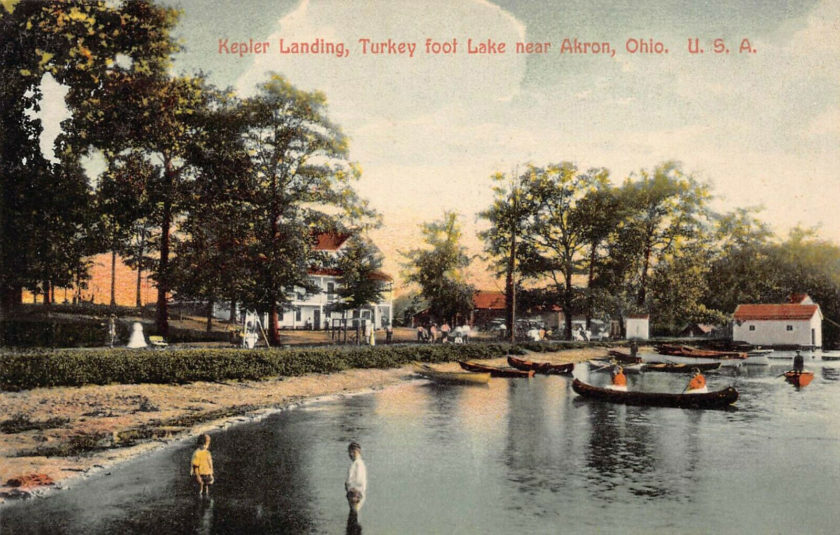
Kepler’s Landing, Turkey Foot Lake
Kepler’s Landing was located at the south end of Turkey Foot Lake. The hotel was built in 1892 by William Kepler.
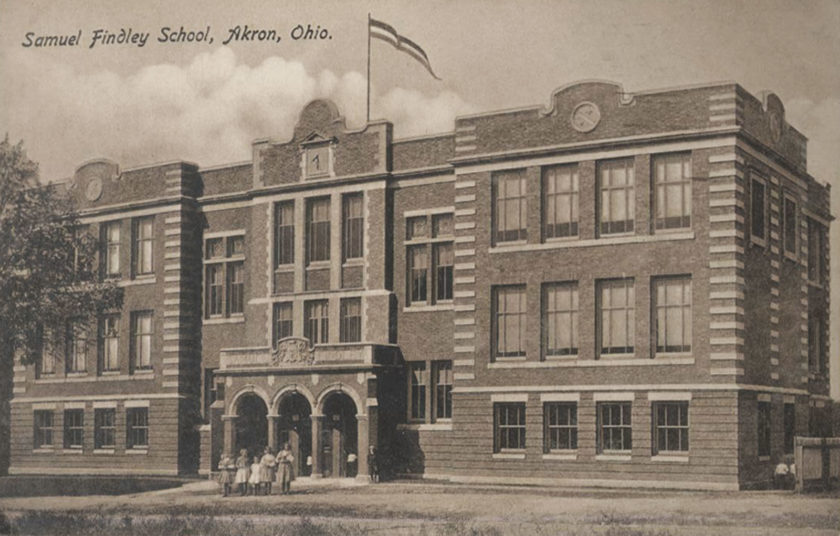
Findley School
Built in 1906, this beautiful structure was designed by architects Harpster & Bliss. Evident throughout the exterior and interior of Findley School were elements of the Beaux Arts style with additional Classical Revival details. The school was located in the triangular lot created by W. Tallmadge Ave, W. Cuyahoga Falls Ave., and Wall Street.
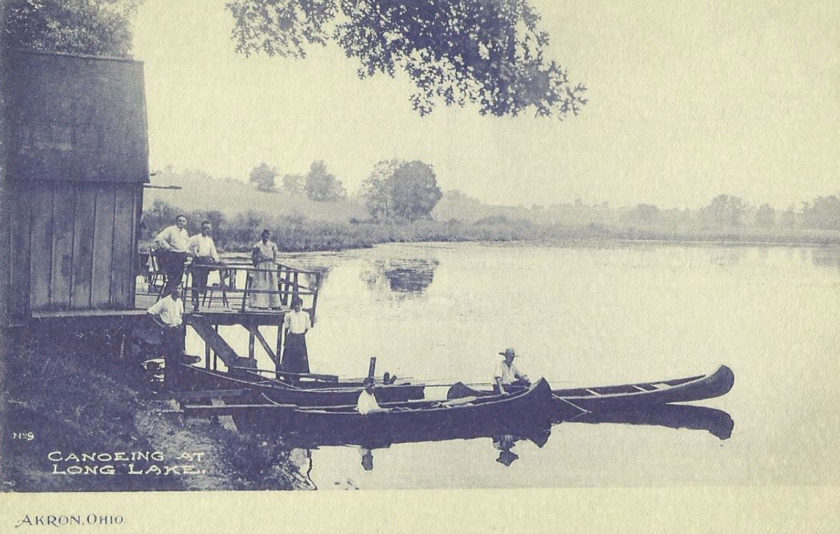
Canoeing at Long Lake
Recreation on the Portage Lakes.
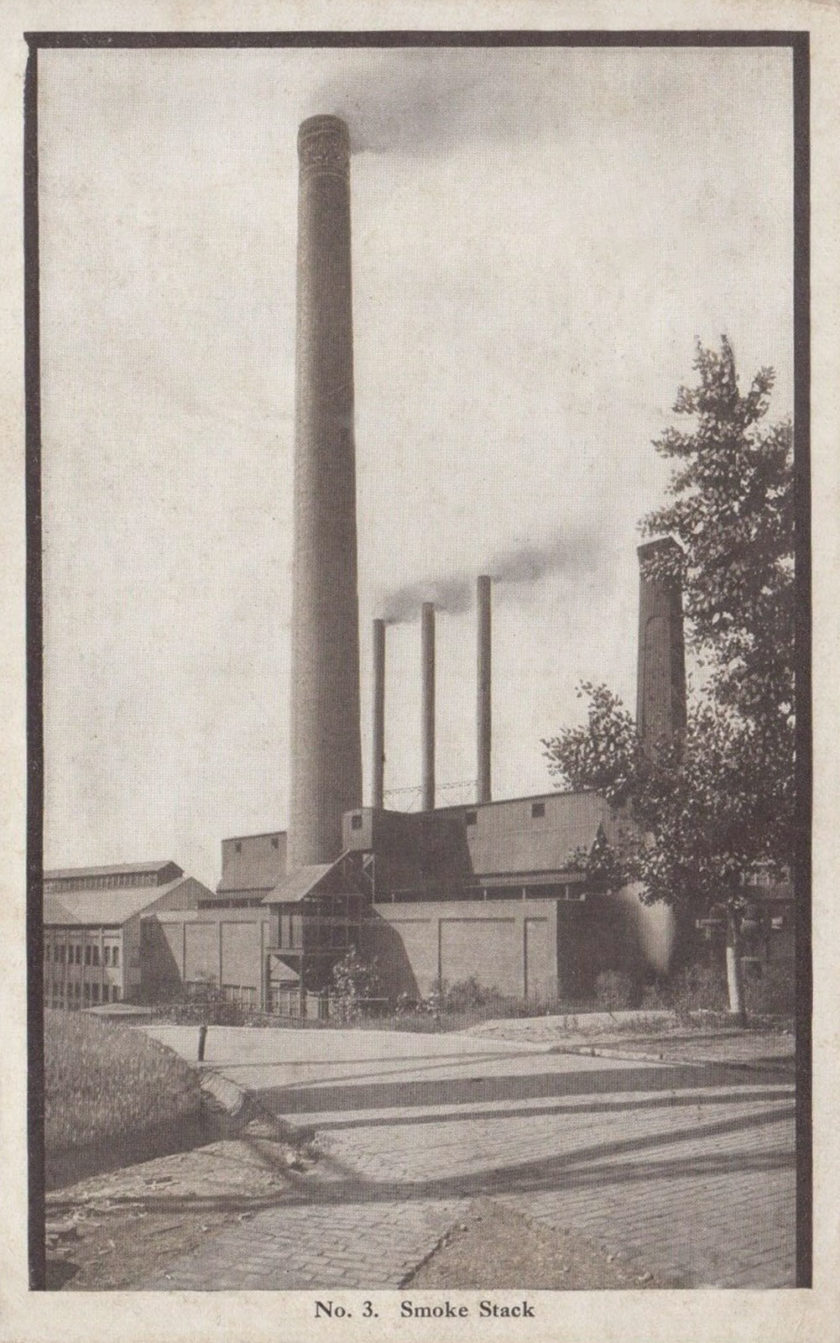
No. 3 Smoke Stack – Goodyear
“This remarkable stack rises to a height of 250 feet. The diameter at base is 22 feet and 5 in. with 32 5/8 in. wall. Is 12 feet in diameter at top. 1310 tons of material were required to build it. The stack fans the fires under our boilers and is in a way responsible…
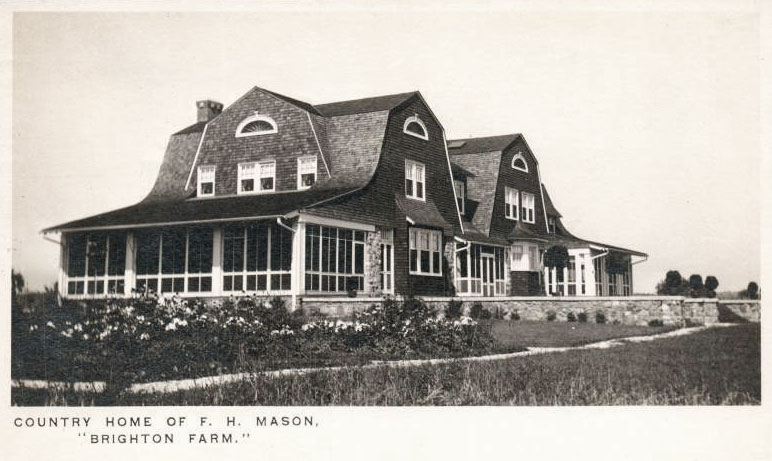
Brighton Farm – Portage Lakes
Country home of Akron industrialist and philanthropist, Frank Hibbard Mason (1852-1931). Mason worked for B. F. Goodrich.